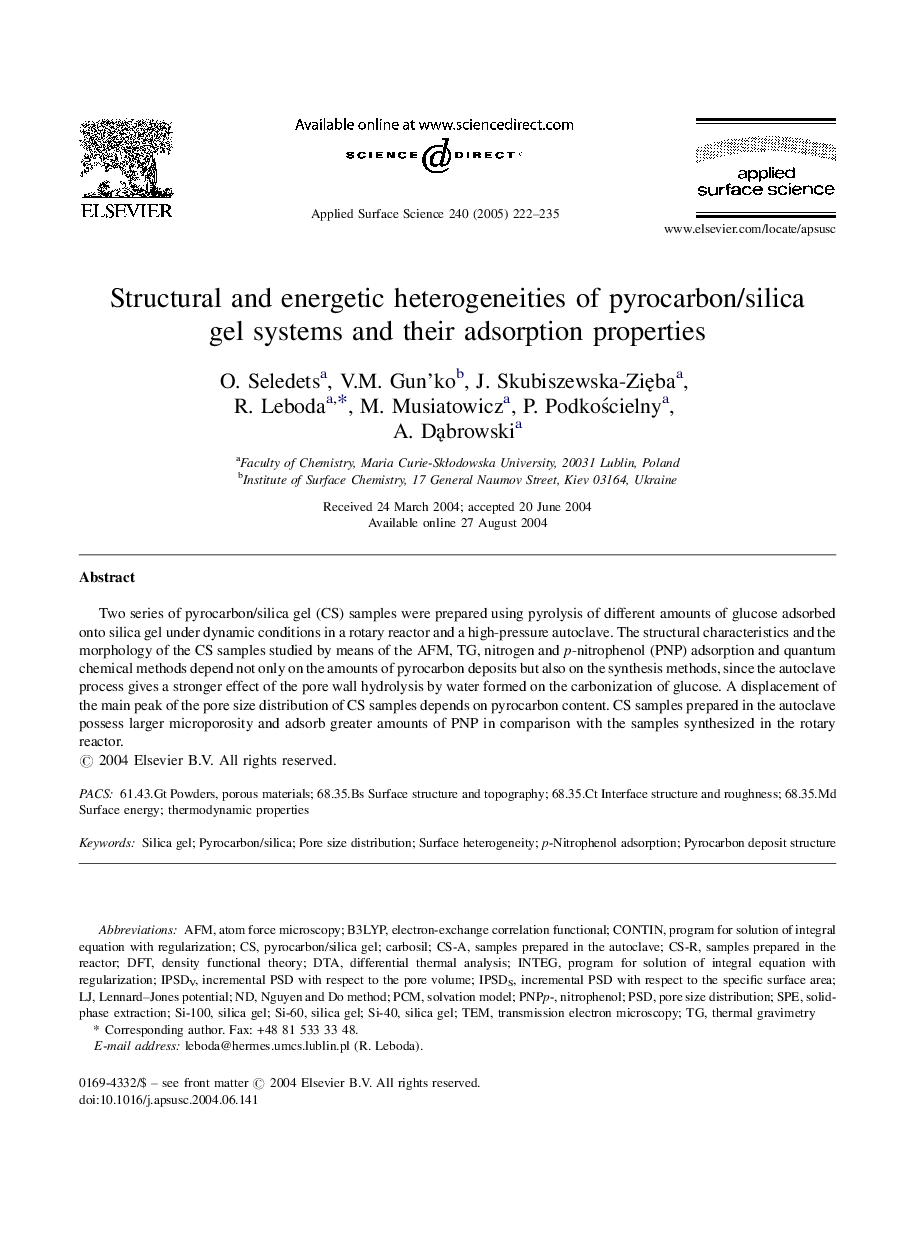| Article ID | Journal | Published Year | Pages | File Type |
|---|---|---|---|---|
| 9567640 | Applied Surface Science | 2005 | 14 Pages |
Abstract
Two series of pyrocarbon/silica gel (CS) samples were prepared using pyrolysis of different amounts of glucose adsorbed onto silica gel under dynamic conditions in a rotary reactor and a high-pressure autoclave. The structural characteristics and the morphology of the CS samples studied by means of the AFM, TG, nitrogen and p-nitrophenol (PNP) adsorption and quantum chemical methods depend not only on the amounts of pyrocarbon deposits but also on the synthesis methods, since the autoclave process gives a stronger effect of the pore wall hydrolysis by water formed on the carbonization of glucose. A displacement of the main peak of the pore size distribution of CS samples depends on pyrocarbon content. CS samples prepared in the autoclave possess larger microporosity and adsorb greater amounts of PNP in comparison with the samples synthesized in the rotary reactor.
Keywords
SPE68.35.Ct Interface structure and roughness68.35.Bs Surface structure and topographyp-Nitrophenol adsorptionB3LYPDTAPSDAFMPCMDFTDifferential Thermal AnalysisSolid-phase extractionTemPore size distributionCONTINThermodynamic propertiesSilica gelSolvation modelTransmission electron microscopyatom force microscopySurface heterogeneityDensity functional theorynitrophenolLennard–Jones potentialThermal gravimetry
Related Topics
Physical Sciences and Engineering
Chemistry
Physical and Theoretical Chemistry
Authors
O. Seledets, V.M. Gun'ko, J. Skubiszewska-ZiÄba, R. Leboda, M. Musiatowicz, P. PodkoÅcielny, A. DÄ
browski,
